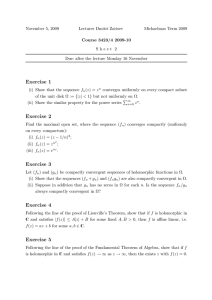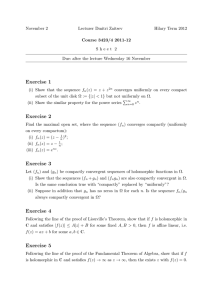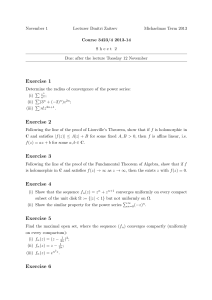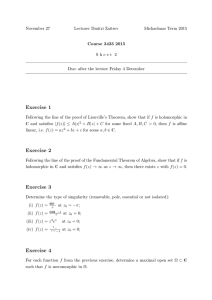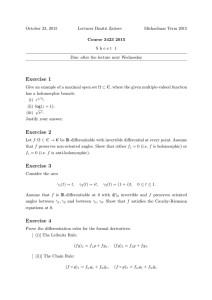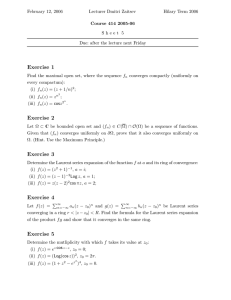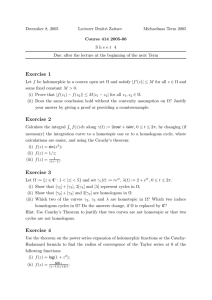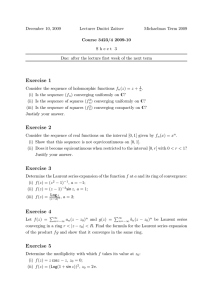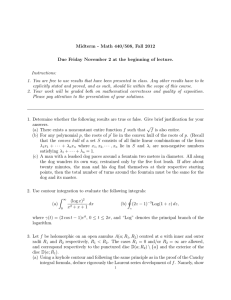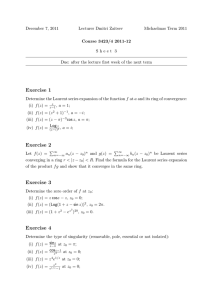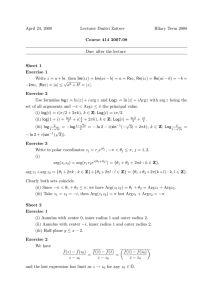December 7, 2007 Lecturer Dmitri Zaitsev Michaelmas Term 2007 Course 414 2007-08
advertisement
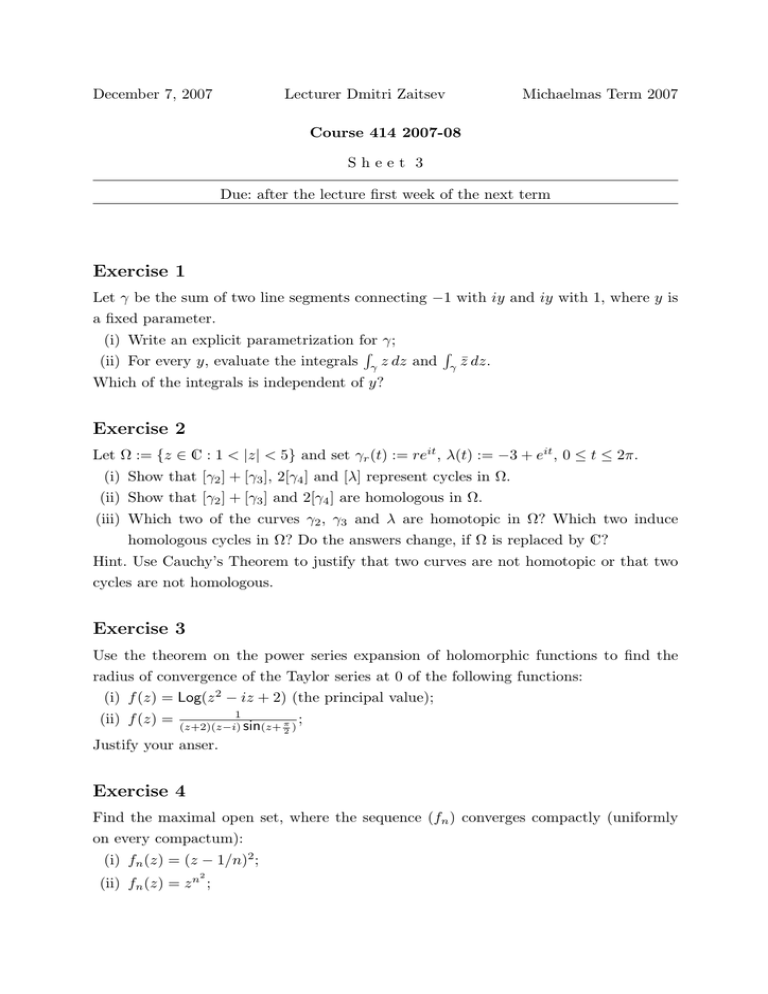
December 7, 2007
Lecturer Dmitri Zaitsev
Michaelmas Term 2007
Course 414 2007-08
Sheet 3
Due: after the lecture first week of the next term
Exercise 1
Let γ be the sum of two line segments connecting −1 with iy and iy with 1, where y is
a fixed parameter.
(i) Write an explicit parametrization for γ;
R
R
(ii) For every y, evaluate the integrals γ z dz and γ z̄ dz.
Which of the integrals is independent of y?
Exercise 2
Let Ω := {z ∈ C : 1 < |z| < 5} and set γr (t) := reit , λ(t) := −3 + eit , 0 ≤ t ≤ 2π.
(i) Show that [γ2 ] + [γ3 ], 2[γ4 ] and [λ] represent cycles in Ω.
(ii) Show that [γ2 ] + [γ3 ] and 2[γ4 ] are homologous in Ω.
(iii) Which two of the curves γ2 , γ3 and λ are homotopic in Ω? Which two induce
homologous cycles in Ω? Do the answers change, if Ω is replaced by C?
Hint. Use Cauchy’s Theorem to justify that two curves are not homotopic or that two
cycles are not homologous.
Exercise 3
Use the theorem on the power series expansion of holomorphic functions to find the
radius of convergence of the Taylor series at 0 of the following functions:
(i) f (z) = Log(z 2 − iz + 2) (the principal value);
(ii) f (z) =
1
;
(z+2)(z−i) sin(z+ π
2)
Justify your anser.
Exercise 4
Find the maximal open set, where the sequence (fn ) converges compactly (uniformly
on every compactum):
(i) fn (z) = (z − 1/n)2 ;
2
(ii) fn (z) = z n ;
(iii) fn (z) = enz .
Exercise 5
Let (fn ) and (gn ) be compactly convergent sequences of holomorphic functions in Ω.
(i) Show that the sequences (fn + gn ) and (fn gn ) are also compactly convergent in Ω.
(ii) Suppose in addition that gn has no zeros in Ω for each n. Is the sequence fn /gn
always compactly convergent in Ω?
Exercise 6
Determine the Laurent series expansion of the function f at a and its ring of convergence:
(i) f (z) = (z 2 + 1)−1 , a = i;
(ii) f (z) = (z − 1)−2 Log z, a = 1;
(iii) f (z) = cos(πz) , a = 2;
z(z−2)3
Exercise 7
Let f (z) =
P∞
n=−∞
an (z − z0 )n and g(z) =
P∞
n=−∞ bn (z
− z0 )n be Laurent series
converging in a ring r < |z − z0 | < R. Find the formula for the Laurent series expansion
of the product f g and show that it converges in the same ring.
Exercise 8
Determine the mutliplicity with which f takes its value at z0 :
(i) f (z) = ez cosz−z , z0 = 0;
(ii) f (z) = (Log(cos z))2 , z0 = 2π.
2
(iii) f (z) = (1 + z 2 − ez )4 , z0 = 0.
